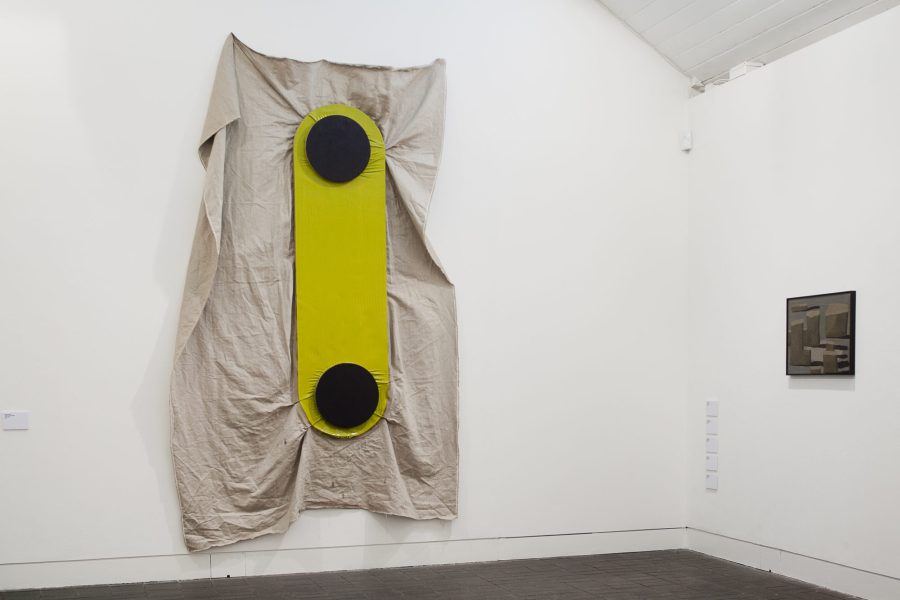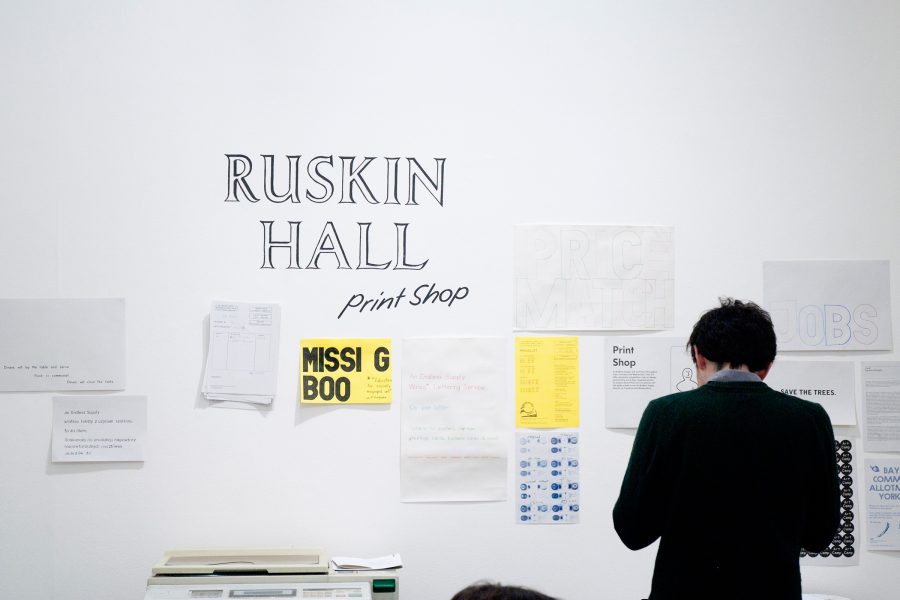What are the first materials that you recall experimenting with artistically?
All sorts really, anything I could find from sewing materials to bits for drawing and painting.
You did a foundation at Chelsea College before a BA in painting at Camberwell School of Art – were you always confident that painting would be your medium?
At school, I really enjoyed most creative, practical subjects, like art and design technology. On the foundation there was the possibility of trying new things out, which was a relief as I had become quite bored of ‘realistic’ painting.
During my foundation, I was encouraged to apply for textiles because the projects we did came quite easily to me – following a process rather than trying to decide what sort of a painter I was. I think that’s why I’ve developed a method of working now where the process is key to what I do.
I always felt there was something in painting I wanted to explore, and once I was at Camberwell on the Painting BA I knew I was in the right place.
Take me through your process for the works on display at the Jerwood Space.
They all start with one large piece of material and an idea of the sort of structure I want to make (in this instance, a circle or a lozenge).
I wanted to explore different materials for the three pieces at the Jerwood: how a coarse flax linen would compare to a silky herringbone linen or a canvas when being stretched and pulled.
It’s a very physical process: the material is stretched around the outermost stretcher and then layered up, stretching one over the other, so that the supports create not only the surface but also the composition.
Because they are circular shapes it’s a real challenge to get the fabric to stretch perfectly and folds and tucks naturally appear where I try to make the surface as flat as possible.
I then use an oil paint mixture to paint the flat stretched surfaces of the painting in one or two colours. Depending on the piece, the work is then unpeeled or un-stretched, shifted, before being re-stretched again.
The most exciting part is unpeeling the painted surface to reveal the pleated canvas. The result remains unknown until I have the confidence to undo what I have made.
Did the grant allow you to invest in any different equipment or materials?
I bought a router to cut the wooden shaped supports; I used more interesting materials like the herringbone linen and flax which each have very different, interesting qualities; and I invested more into the paints and pigments that I was using which created richer, smoother colours.
Most importantly, the Jerwood fellowship allowed me to have a studio in which to explore these materials.
Do you use research material, of a visual or academic kind, to prepare?
Not really. Like most artists, I look at other artists’ work. But I don’t take photos or base the shapes of the work on any particular image. They really appear through exploring the materials and the process of stretching.
On my BA at Camberwell, I became interested in the potential of abstract painting, around which there’s obviously a wealth of academic material, so I suppose I have used that to bounce off for ideas.
What attracts you to the personality of certain materials, such as oil paint?
Oil paint has a lustrous quality to it that you can’t quite achieve with anything else. Its tactile and rich and mixed with other mediums it makes more of a uniform surface – which I’ve been looking for with my work recently.
Where do your colours come from?
Everywhere really. Sometimes I have a colour in mind before I start an idea. When there is a blank piece waiting for a colour in the studio I start seeking colour everywhere,- it could be some garden railings or once it was a couple that had brightly coloured bags that went really well together. Then I re-create those colours in the studio and match them from memory.
I work in an art materials shop in Bethnal Green (AP Fitzpatrick, an ideal job) and being surrounded by beautiful vibrant pigments means that I find myself thinking about colour all the time.
Simon Bayliss remarked in a recent review of the Jerwood exhibition that your ‘processes appear more dispassionate’ than the nihilistic energies of an artist like Steven Parrino. Would you say this is true?
Yes it’s not a reactionary process but an explorative one.

